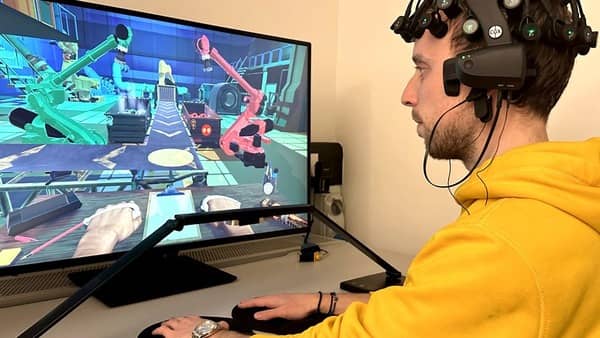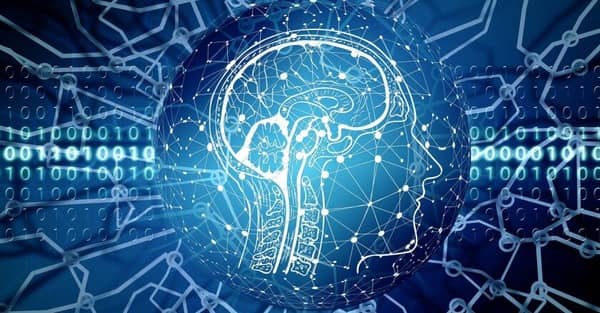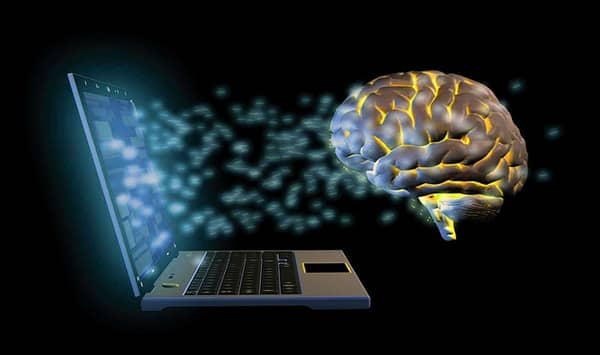
What is Data Center Optical Switch Technology?
April 19, 2023
What Is Disruptive Technology?
April 25, 2023Brain-computer interfaces are a fast-advancing technology with the potential to change how we interact with computers and other devices. By detecting and interpreting the electrical signals generated by the brain, this technology allows users to control computers or other devices using just their thoughts. While brain-computer interfaces have many applications in fields such as healthcare, gaming, and neuroscience research, the massive amounts of data generated by these devices require the support of powerful data centers and robust data protection measures.

How Do Brain-Computer Interfaces Work?
The reason brain-computer interfaces work is that our brain functions similarly to electricity. The technology allows direct communication between a human brain and an external device, such as a computer or prosthetic limb. It works by interpreting the brain’s electrical signals into a format that the external device can understand.
Brain-computer interfaces use a range of different technologies to detect and interpret these signals. One standard method is electroencephalography or an EEG, which works by placing electrodes on the scalp to detect electrical activity in the brain. Other methods include functional magnetic resonance imaging fMRI, which uses magnetic fields to identify changes in blood flow in the brain, and invasive techniques such as implanted electrodes.
Once the signals have been detected and interpreted, they are deciphered into commands that can be used to control an external device. A brain-computer interface could be used to control a prosthetic limb by detecting signals related to movement in the brain and translating them into commands that control the movements of the prosthetic.
While brain-computer interfaces are still in the early stages of development, they can potentially transform a wide range of fields, including healthcare, education, gaming, and entertainment. As technology continues to evolve and improve, brain-computer interfaces will likely become more refined and versatile, allowing for new and essential applications in the future.

What Are the Various Types of Brain-Computer Interfaces?
There are several different types of brain-computer interfaces, each with advantages and disadvantages. Invasive brain-computer interfaces involve implanting electrodes directly into the brain, while non-invasive brain-computer interfaces use external sensors, such as EEG sensors placed on the scalp. Minimally invasive brain-computer interfaces involve placing electrodes on or near the brain without penetrating the brain tissue.
Under the umbrella of brain-computer interfaces are invasive and non-invasive BCIs. Invasive brain-computer interfaces are the most precise and accurate but also carry the highest risks and require surgery. Non-invasive brain-computer interfaces are easier to use and carry fewer risks but are less accurate and precise. Partially invasive brain-computer interfaces offer a balance between the two, providing high levels of accuracy with fewer risks.

What Are the Uses and Benefits of Brain-Computer Interfaces?
As mentioned earlier, brain-computer interfaces have many benefits and applications, especially in healthcare. The technology can be used to help people with disabilities, including those who have suffered a spinal cord injury or who have a degenerative neuromuscular disease. By using a brain-computer interface to control a prosthetic limb or other assistive devices, these individuals can regain independence and improve their quality of life. Additionally, brain-computer interfaces are being used in neuroscience research to help scientists better understand the brain and its functions.
Brain-Computer Interfaces in Gaming
Brain-computer interfaces can also be deployed in gaming where they can control virtual environments using the power of thought alone. Brain-Computer Interfaces can potentially transform the gaming industry, offering new and innovative ways to interact with virtual environments within various games. Brain-computer interfaces allow users to control games using their brainwaves, providing a unique and immersive gaming experience.
Brain-computer interfaces in gaming utilize the same methods using sensors to detect electrical signals produced by the brain. These signals are turned into commands that can be used to control the game. For example, a user might be able to control the movement of a character in a game by thinking about specific movements or gestures.
Brain-computer interfaces can also be used to monitor the user’s emotional and cognitive states, allowing the game to adapt and respond accordingly. If a user becomes bored or frustrated with a particular level, the game could adjust the difficulty level or introduce new challenges to keep the user engaged.
While brain-computer interfaces in gaming are still in the early stages of development, they have already shown great promise in providing new ways to interact with virtual environments. As technology evolves and improves, brain-computer interfaces will likely become an increasingly significant part of the gaming industry, offering new and innovative ways to engage with games and other digital media.

What Are the Challenges of Brain-Computer Interfaces?
While brain-computer interfaces have many potential benefits and applications, many potential challenges are associated with their use. Privacy concerns regarding brain-computer interfaces have been raised, as they can potentially reveal sensitive information about a user’s thoughts and emotions.
Additionally, technical limitations and the need for further research pose challenges to developing and implementing brain-computer interfaces. While brain-computer interfaces have already shown great promise in helping people with disabilities and advancing our understanding of the brain, much work still needs to be done to realize their potential fully.

What Is the Role of Data Centers in Brain-Computer Interfaces?
While brain-computer interfaces have many potential applications, they also generate massive amounts of data that must be processed and analyzed in real-time. This requires the support of powerful data centers that can handle the high bandwidth and processing demands of brain-computer interface data.
Data centers play a critical role in developing and deploying brain-computer interfaces. They provide the infrastructure necessary to store and process the massive amounts of data these devices generate. Data centers are necessary to ensure that brain-computer interfaces are accessible to users worldwide, regardless of their location.
Regarding brain-computer interfaces, confidentiality will be one of the main issues. These interfaces collect sensitive data related to a user’s thoughts, emotions, and cognitive processes, and it is crucial to protect this data from potential misuse or unauthorized access.
One way to do this is by employing various data protection measures, including data minimization, transparency, and user consent. With data minimization, only the necessary data is collected for the intended purpose of the brain-computer interface. Data transparency and user consent involve informing users about how their data will be collected and used and obtaining their explicit consent to these practices.
It is vital to prioritize data protection in advancing and utilizing brain-computer interfaces. By employing responsible data protection measures, we can ensure that this technology can be used to its full potential without risking users’ privacy and security.
Conclusion
Brain-computer interfaces have many potential uses and applications, from healthcare to gaming to neuroscience research. However, the massive amounts of data generated by the technology require the support of powerful data centers to process and analyze. With continued research and development, brain-computer interfaces have the potential to revolutionize fields such as healthcare, gaming, and communication.
The role of data centers in supporting the development of brain-computer interfaces cannot be understated. With ongoing investment and research, brain-computer interfaces have the potential to change the world, from helping people with disabilities to advancing our understanding of the brain. While various challenges correlate with their use, the potential of brain-computer interfaces to change how we interact with computers and other devices cannot be overstated.

